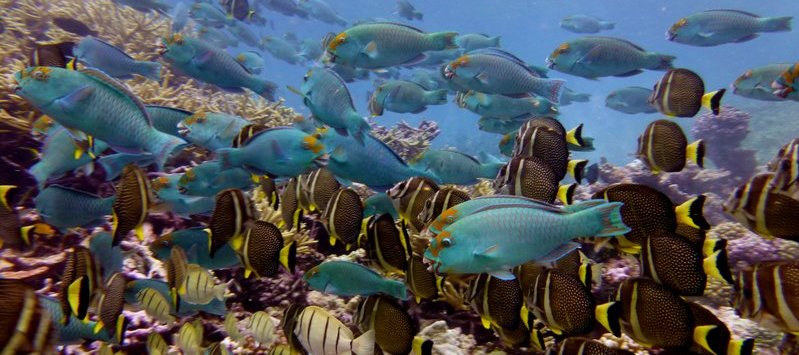Finding the Balance: working together to understand ecological tipping points
What does it mean to cross a tipping point? In ecological systems, it can mean an ocean without fisheries, coral reefs without corals or a North Pole without ice. In human social systems, it may mean collapsed economies or the erosion of a community’s cultural identity.
Tipping points occur when small shifts in human pressures (such as overfishing) or environmental conditions bring about large, sometimes abrupt changes in a system. These changes can have lasting impacts on human communities, the environment, and in some cases our global climate.

The symposium, Finding the Balance: Collaboration on Social-Ecological Tipping Points, being held on February 12 as part of the annual meeting of the American Association for the Advancement of Science (AAAS), will discuss innovative ways that scientists and environmental managers are collaborating to prevent ecosystems from tipping into degraded states, and restore systems that have already tipped. Examples from case studies around the Pacific will highlight where the latest science and management tools are already helping managers protect their region, and where tipping points science could be used to improve resource conservation.
“On a planet that is headed toward 9.7 billion people by 2050, with coastal population growth outstripping that of the interior, we have to recognize that ecosystems have limits and find ways to stay within those limits,” says Carrie Kappel, symposium organizer, and leader of the interdisciplinary, cross-institutional Ocean Tipping Points Project.
Phil Levin (National Oceanic and Atmospheric Administration) will describe the strong cultural connection that First Nations people in British Columbia have with herring populations, and how commercial overfishing coupled with climate change has caused a tipping point with significant implications for local Haida Gwaii culture and economies. Herring is a linchpin of the northern Pacific food chain—everything from gulls and eagles to sea lions and humpback whales rely on them for food. Herring are also central to the Haida Nation’s way of life. In the 1990s herring populations collapsed dramatically from overfishing and they are still struggling to recover. The depleted population has become increasingly vulnerable to climate change. The Haida and other coastal First Nations are fighting to protect remaining herring populations. Levin contends that a more holistic approach to fisheries management, one that considers both ecological and social tipping points, is necessary to sustain herring into the future.
Kim Selkoe (University of California, Santa Barbara) will describe a collaborative effort in Hawai‘i working to untangle how land- and ocean-based stresses like overfishing and runoff interact to cause abrupt shifts in coral reef ecosystems. With coral bleaching on the rise on Hawaiian reefs, reducing local threats can help protect reef ecosystems and reduce their likelihood of collapse. New insights from this research are helping managers identify key signals—such as changes in algal cover or total fish abundance—that may indicate when a reef is edging towards a tipping point, allowing them to act sooner to protect these cherished habitats.
Tim Lenton (University of Exeter) will argue in his talk that current climate models should incorporate tipping points science to better estimate and understand the huge environmental, economic, and social costs of excess carbon.
The symposium will run from 10am-11:30am on Friday, February 12, 2016 in Wilson B room at Marriot Wardman Park.
For more information about the symposium click here.
For information about the Ocean Tipping Points project click here.
Photo credits: Katie Davis
